Touch wood: Katie Paterson and Zeller & Moye unveil Hollow installation in Bristol
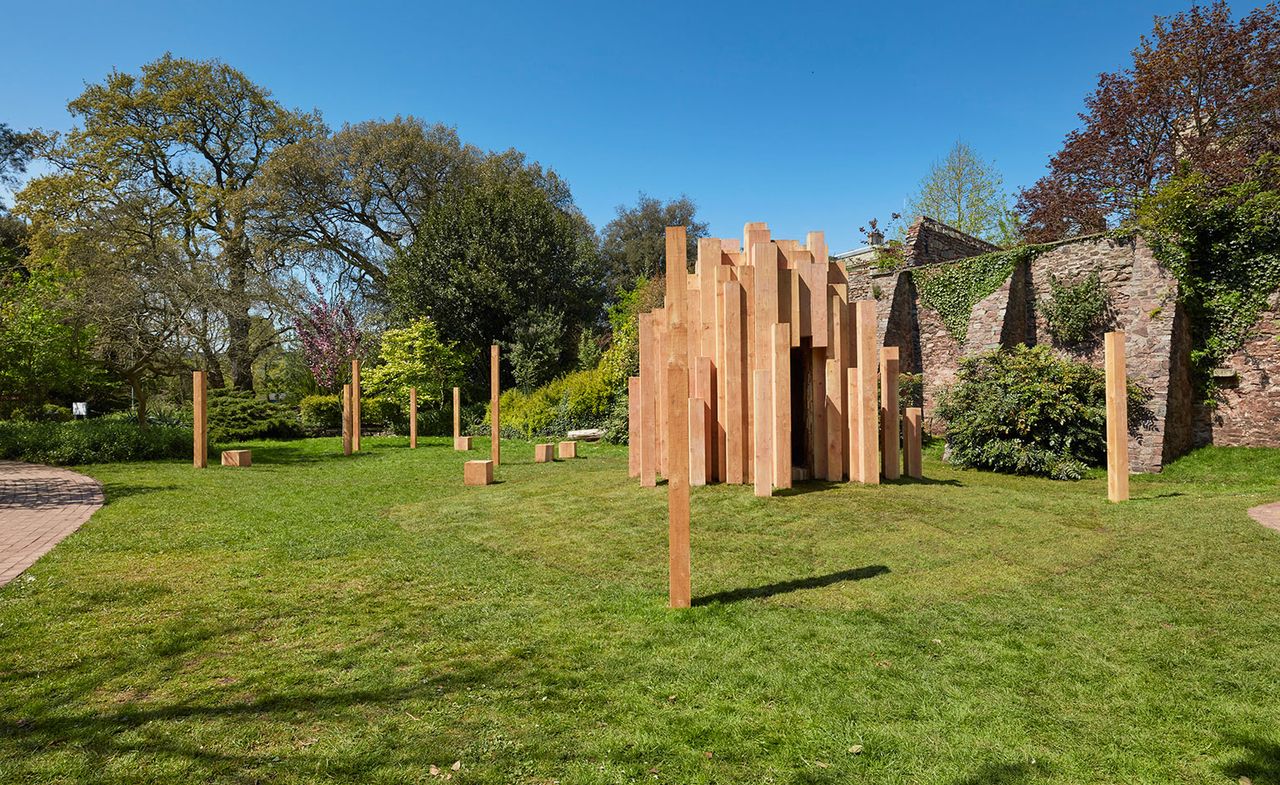
To create a work of art that contains a bit of the world's forests sounds a rather romantic notion, but artist Katie Paterson took a far more scientific approach.
Following a three year research and sourcing process, over 10,000 unique tree species were gathered from across the planet to create Hollow, a new public artwork created in conjunction with Berlin- and Mexico City-based architecture practice Zeller & Moye.
'Some samples are incredibly rare,' explains Paterson of her mini forest, 'fossils of unfathomable age, and fantastical trees such as Cedar of Lebanon, the Phoenix palm, and the Methuselah tree, [which is] thought to be one of the oldest trees in the world at 4,847 years of age.' Reclaimed wood from the Panama Canal Railway and remnants of the iconic Atlantic city boardwalk devastated by Hurricane Sandy in 2012 also form part of the installation.
A blend of ancient cave and primitive hut, a cluster of thick Douglas fir planks sits on the historic Royal Fort Gardens, hiding the rich biodiversity within.
'The design conjoins thousands of wooden blocks of differing sizes to form one immense cosmos of wood producing textures, apertures and stalactites,' explain architects Christoph Zeller and Ingrid Moye. Small openings in the vaulted top allow just enough natural light to filter in to create the dappled light effect of a forest canopy.
Commissioned by Bristol-based arts producers Situations to mark the opening of the University of Bristol's new Life Sciences Building, the installation is a rather fitting tribute to that department. Paterson's process and the creation of Hollow has also been filmed for the BBC Four series What Do Artists Do All Day?
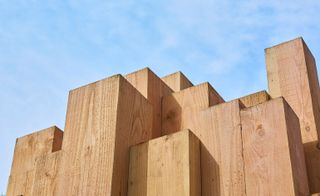
Created by artist Katie Paterson and architecture practice Zeller & Moye, the installation is the result of a three year research and sourcing process
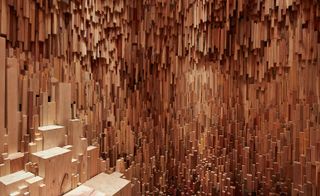
A blend of ancient cave and primitive hut, a cluster of thick Douglas fir planks sits on the historic Royal Fort Gardens, hiding the rich biodiversity within
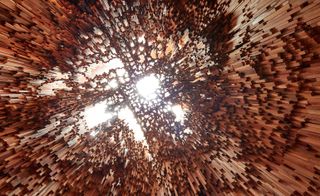
Small openings in the vaulted top allow just enough natural light to filter in to create the dappled light effect of a forest canopy

'The design conjoins thousands of wooden blocks of differing sizes to form one immense cosmos of wood producing textures, apertures and stalactites,' explain architects Christoph Zeller and Ingrid Moy
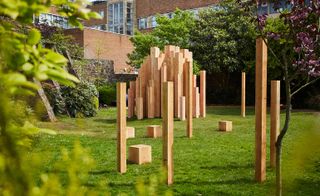
Commissioned by Bristol-based arts producers Situations to mark the opening of the University of Bristol's new Life Sciences Building, the installation is a rather fitting tribute to that department
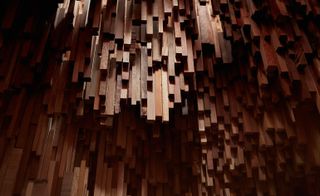
Reclaimed wood from the Panama Canal Railway and remnants of the iconic Atlantic city boardwalk devastated by Hurricane Sandy in 2012 also form part of the installation
INFORMATION
Katie Paterson and Zeller & Moye’s Hollow is open to the public everyday during daylight hours. For more information, visit the Situations website and the Hollow website
Courtesy University of Bristol and Situations
ADDRESS
University of Bristol
Royal Fort Gardens
BS8 1TH
Wallpaper* Newsletter
Receive our daily digest of inspiration, escapism and design stories from around the world direct to your inbox.
-
 MoMA names Christophe Cherix its new director
MoMA names Christophe Cherix its new directorThe Swiss-born curator has worked in the Museum of Modern Art’s drawings and prints department since 2007
By Anna Fixsen Published
-
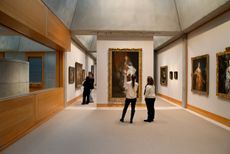 The Yale Center for British Art, Louis Kahn’s final project, glows anew after a two-year closure
The Yale Center for British Art, Louis Kahn’s final project, glows anew after a two-year closureAfter years of restoration, a modernist jewel and a treasure trove of British artwork can be seen in a whole new light
By Anna Fixsen Published
-
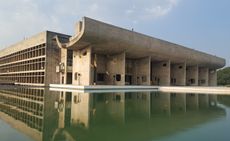 How Le Corbusier defined modernism
How Le Corbusier defined modernismLe Corbusier was not only one of 20th-century architecture's leading figures but also a defining father of modernism, as well as a polarising figure; here, we explore the life and work of an architect who was influential far beyond his field and time
By Ellie Stathaki Published
-
 Remote Antarctica research base now houses a striking new art installation
Remote Antarctica research base now houses a striking new art installationIn Antarctica, Kyiv-based architecture studio Balbek Bureau has unveiled ‘Home. Memories’, a poignant art installation at the remote, penguin-inhabited Vernadsky Research Base
By Harriet Lloyd-Smith Published
-
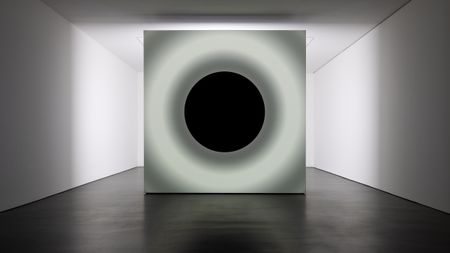 Ryoji Ikeda and Grönlund-Nisunen saturate Berlin gallery in sound, vision and visceral sensation
Ryoji Ikeda and Grönlund-Nisunen saturate Berlin gallery in sound, vision and visceral sensationAt Esther Schipper gallery Berlin, artists Ryoji Ikeda and Grönlund-Nisunen draw on the elemental forces of sound and light in a meditative and disorienting joint exhibition
By Harriet Lloyd-Smith Published
-
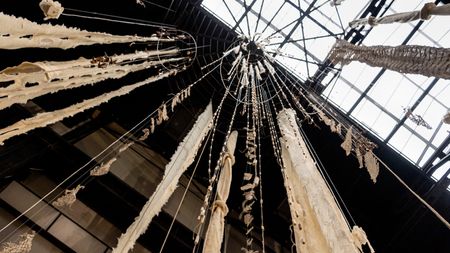 Cecilia Vicuña’s ‘Brain Forest Quipu’ wins Best Art Installation in the 2023 Wallpaper* Design Awards
Cecilia Vicuña’s ‘Brain Forest Quipu’ wins Best Art Installation in the 2023 Wallpaper* Design AwardsBrain Forest Quipu, Cecilia Vicuña's Hyundai Commission at Tate Modern, has been crowned 'Best Art Installation' in the 2023 Wallpaper* Design Awards
By Harriet Lloyd-Smith Published
-
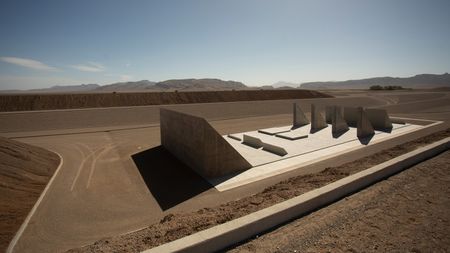 Michael Heizer’s Nevada ‘City’: the land art masterpiece that took 50 years to conceive
Michael Heizer’s Nevada ‘City’: the land art masterpiece that took 50 years to conceiveMichael Heizer’s City in the Nevada Desert (1972-2022) has been awarded ‘Best eighth wonder’ in the 2023 Wallpaper* design awards. We explore how this staggering example of land art came to be
By Harriet Lloyd-Smith Published
-
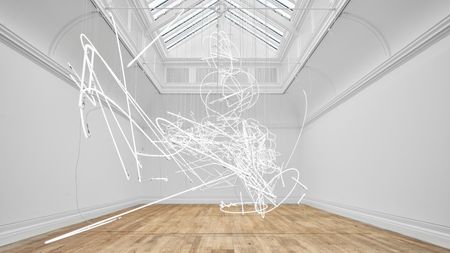 Cerith Wyn Evans: ‘I love nothing more than neon in direct sunlight. It’s heartbreakingly beautiful’
Cerith Wyn Evans: ‘I love nothing more than neon in direct sunlight. It’s heartbreakingly beautiful’Cerith Wyn Evans reflects on his largest show in the UK to date, at Mostyn, Wales – a multisensory, neon-charged fantasia of mind, body and language
By Harriet Lloyd-Smith Published
-
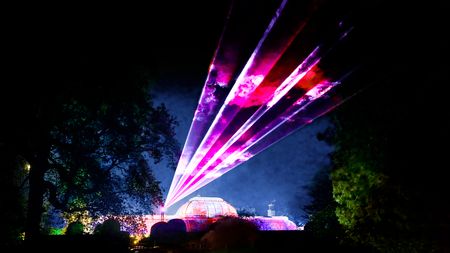 The best 7 Christmas installations in London for art lovers
The best 7 Christmas installations in London for art loversAs London decks its halls for the festive season, explore our pick of the best Christmas installations for the art-, design- and fashion-minded
By Harriet Lloyd-Smith Published
-
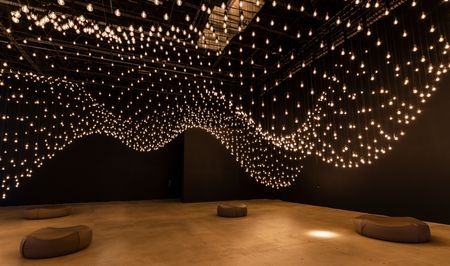 Rafael Lozano-Hemmer’s Pulse Topology in Miami is powered by heartbeats
Rafael Lozano-Hemmer’s Pulse Topology in Miami is powered by heartbeatsRafael Lozano-Hemmer brings heart and human connection to Miami Art Week 2022 with Pulse Topology, an interactive light installation at Superblue Miami in collaboration with BMW i
By Fiona Mahon Last updated
-
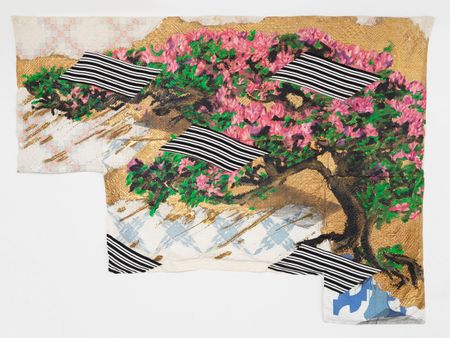 Textile artists: the pioneers of a new material world
Textile artists: the pioneers of a new material worldThese contemporary textile artists are weaving together the rich tapestry of fibre art in new ways
By Harriet Lloyd-Smith Last updated